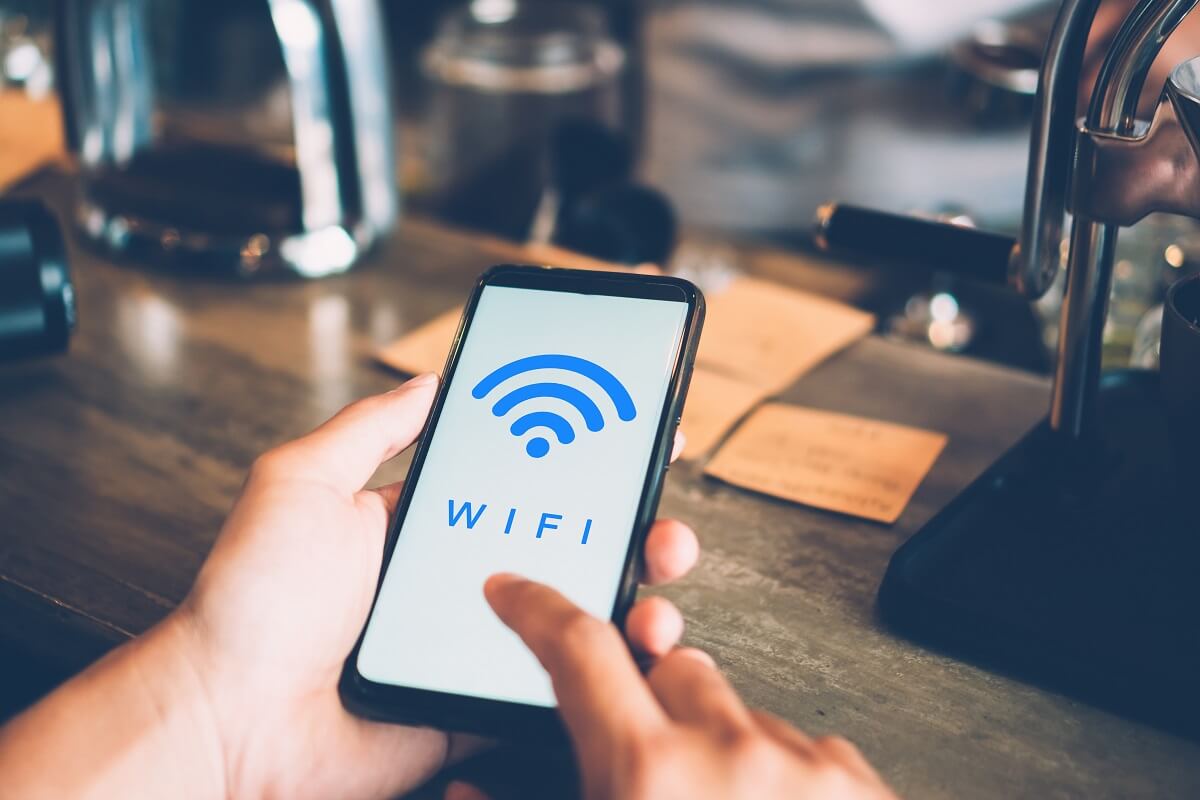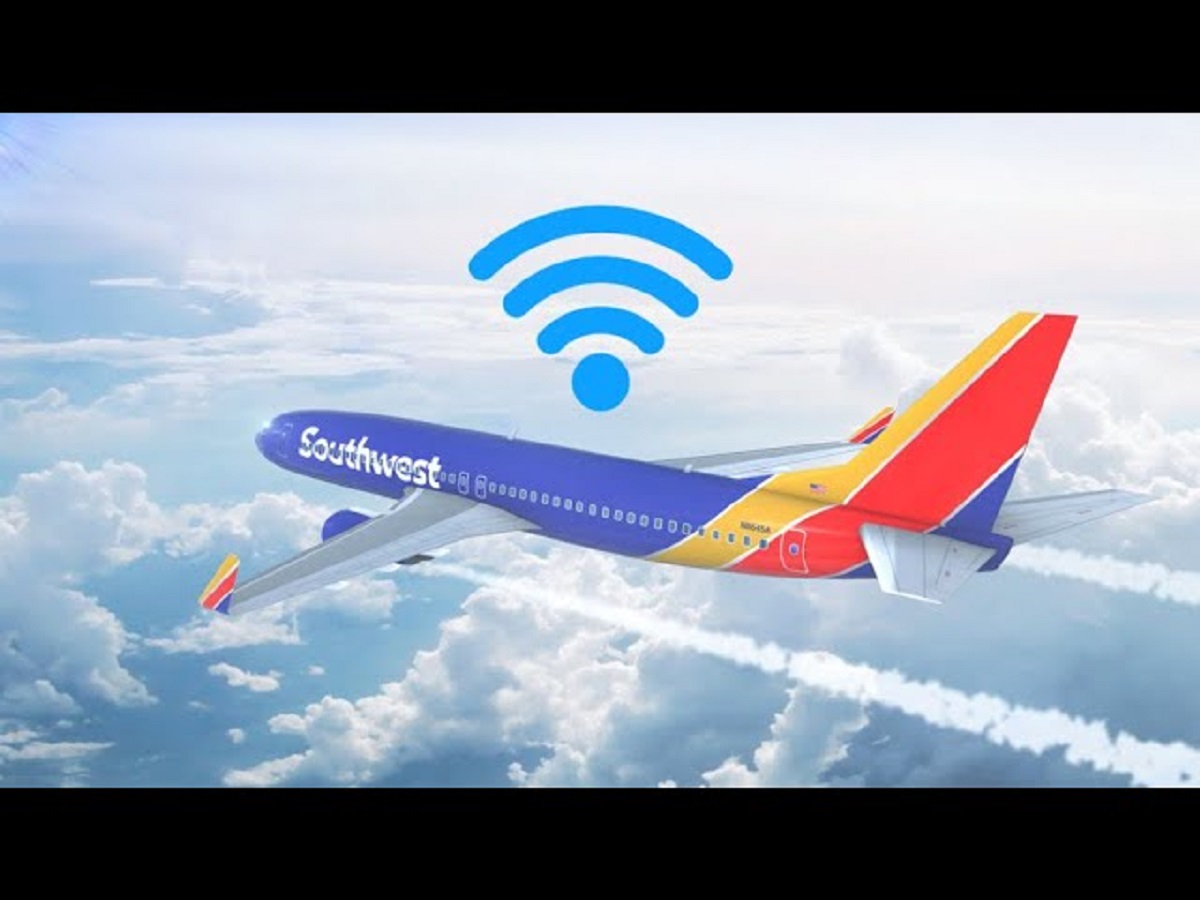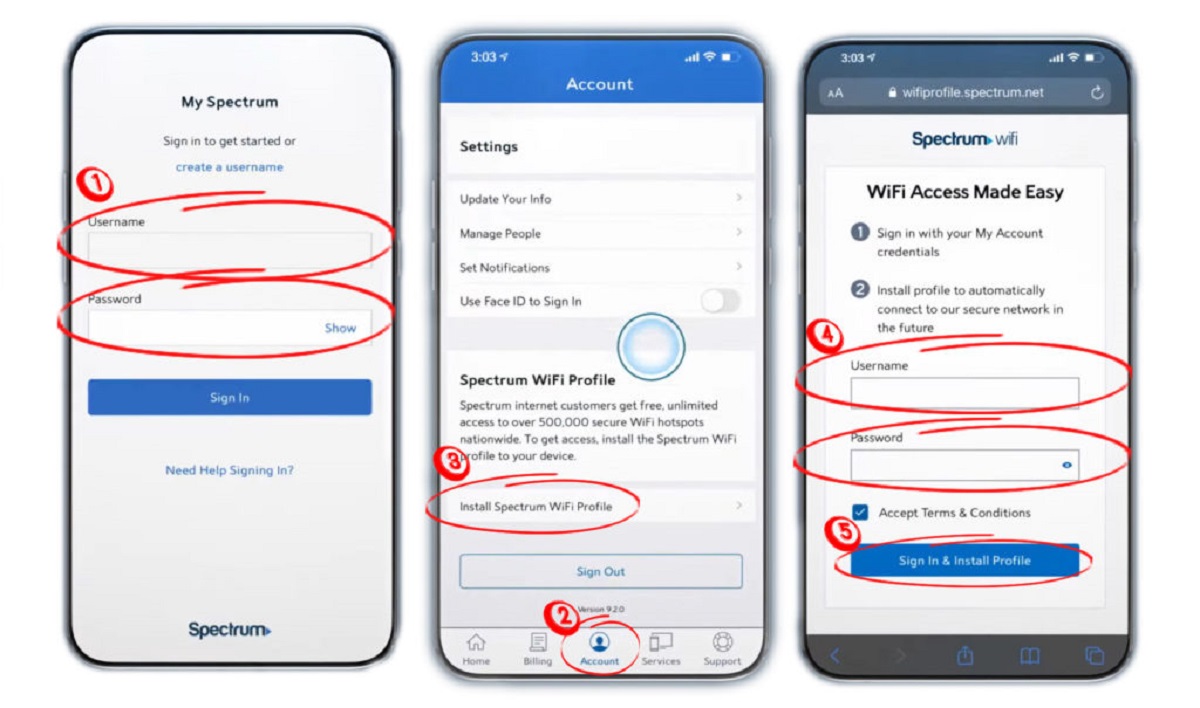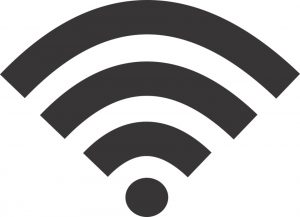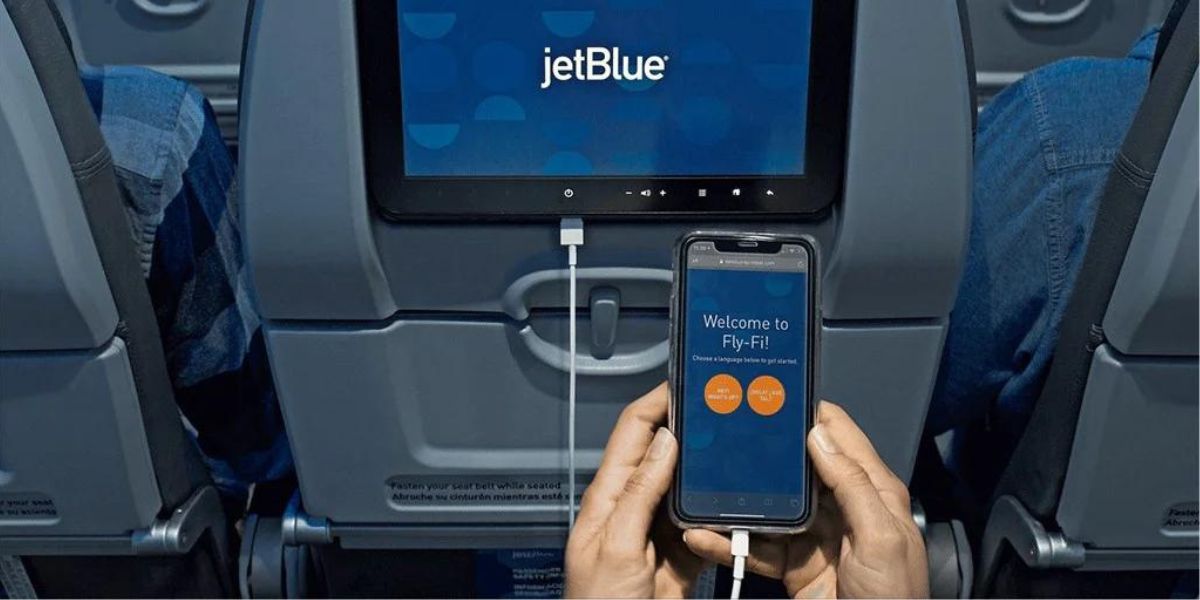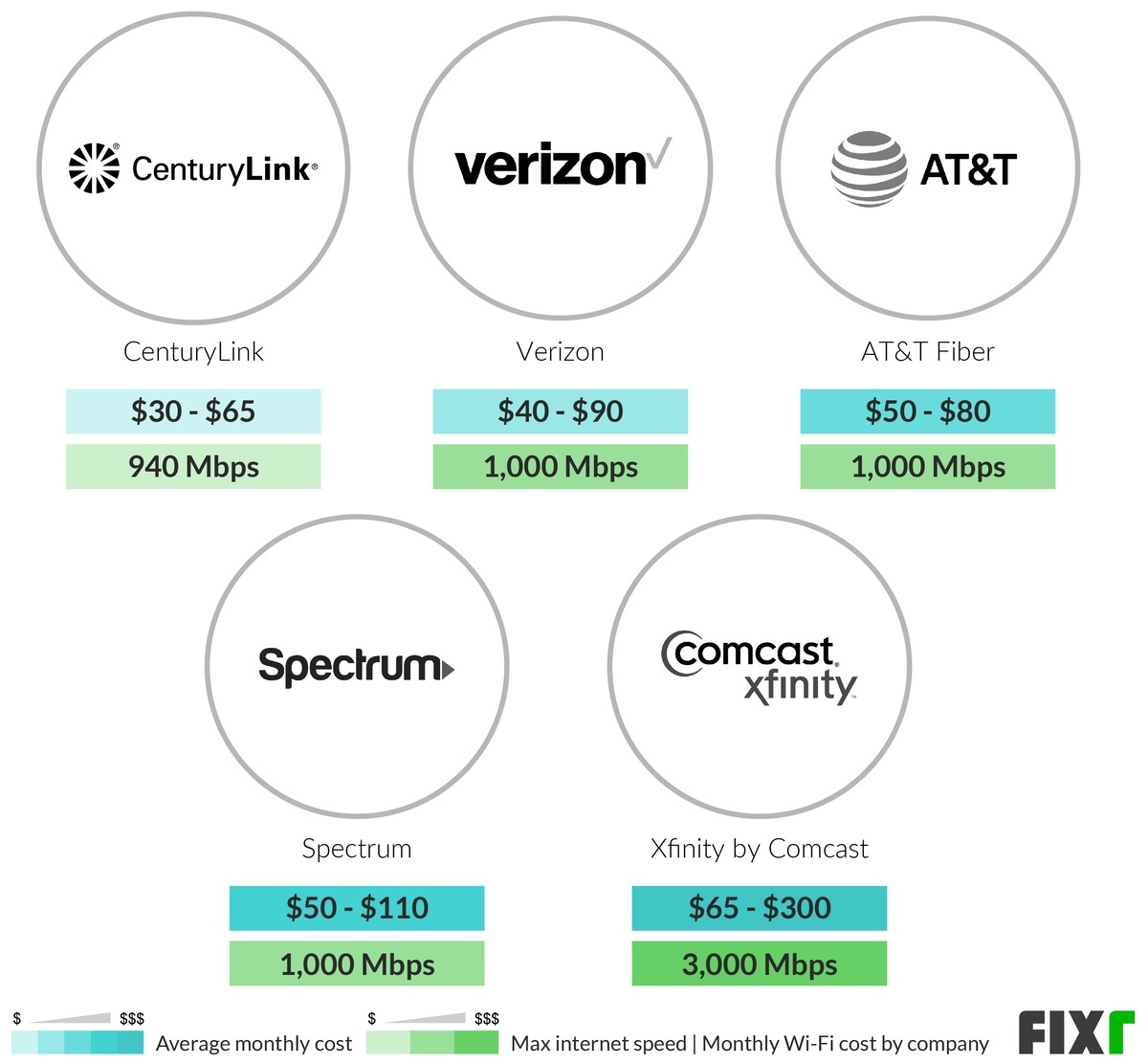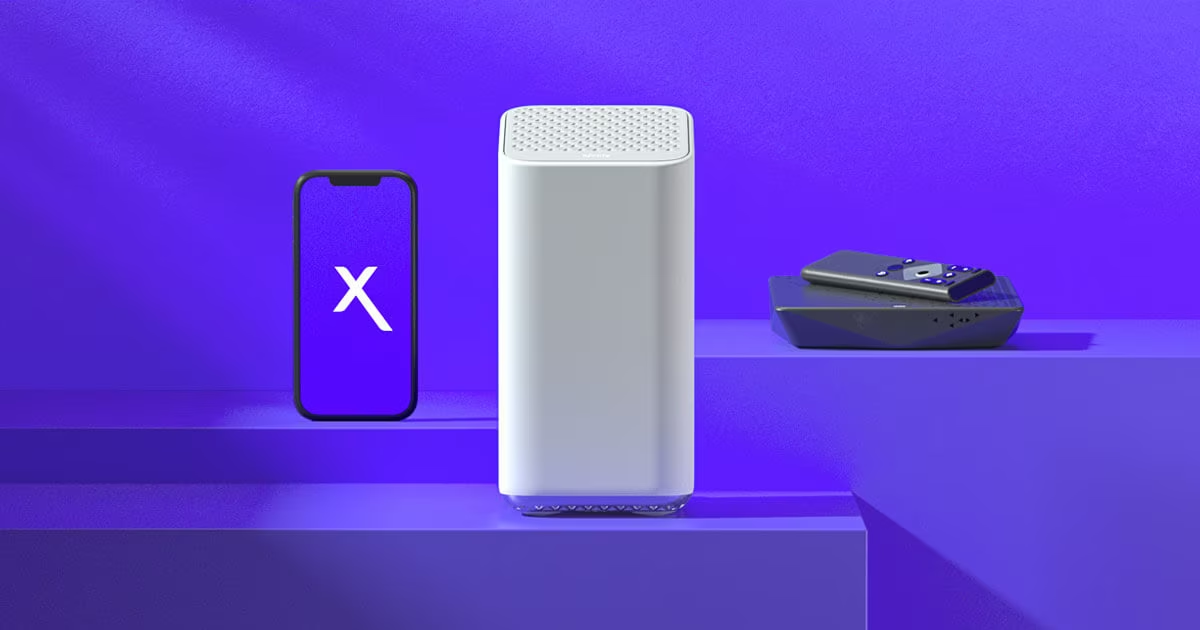Introduction
With the increasing reliance on the internet for work, communication, and entertainment, having access to a reliable Wi-Fi connection has become essential for many people. Whether you’re a student, a professional, or a traveler, the ability to connect to Wi-Fi on the go can greatly enhance your productivity and convenience.
While many establishments charge for Wi-Fi access, there are numerous places where you can find free Wi-Fi, allowing you to stay connected without breaking the bank. In this article, we will explore some of the best places to find free Wi-Fi and share tips on how to make the most of these opportunities.
Having access to free Wi-Fi is not only a cost-effective solution, but it also offers the flexibility to work or browse the internet from virtually anywhere. Whether you’re a freelance writer looking for a comfortable coffee shop to work in or a traveler needing to quickly check your emails in an airport, free Wi-Fi can make all the difference.
This guide will provide you with valuable information on where to find free Wi-Fi and how to optimize your connectivity. By the end, you’ll be equipped with the knowledge to stay connected wherever you go without draining your budget.
Why Wi-Fi is important
Wi-Fi has become an integral part of our daily lives, offering a multitude of benefits that make it an essential service for many individuals. Here are several reasons why Wi-Fi is so important:
- Connectivity: Wi-Fi provides wireless internet access, allowing you to connect your devices, like smartphones, laptops, and tablets, to the internet without the need for physical cables. This enables greater mobility and convenience, as you can access the internet from anywhere within the range of a Wi-Fi network.
- Productivity: Having access to Wi-Fi enables greater productivity, whether you’re working, studying, or simply managing your personal tasks. With a stable internet connection, you can access online resources, collaborate with others, and complete tasks efficiently. This is particularly beneficial for remote workers, students, and entrepreneurs who rely on the internet for their work.
- Communication: Wi-Fi allows for seamless communication through various online platforms, such as email, messaging apps, and video conferencing tools. You can stay connected with friends, family, and colleagues, regardless of their location, enabling instant communication and real-time collaboration.
- Entertainment: Wi-Fi opens up a world of entertainment possibilities. You can stream movies and TV shows, listen to music, play online games, and browse social media platforms without worrying about data limits or slow connections. This enhances your leisure time and provides entertainment options wherever you are.
- Cost-Efficiency: Utilizing free Wi-Fi networks can help you save money on your monthly internet bills. Instead of relying solely on your cellular data plan or paying for Wi-Fi access, you can take advantage of the many places that offer free Wi-Fi, reducing your expenses without compromising on connectivity.
Given these advantages, it’s clear why Wi-Fi has become an indispensable part of our lives. Whether for work, communication, or entertainment purposes, having access to reliable and affordable Wi-Fi is crucial in today’s fast-paced, interconnected world.
Places to find free Wi-Fi
Fortunately, there are numerous places where you can find free Wi-Fi, allowing you to stay connected without incurring additional costs. Here are some of the best places to find free Wi-Fi:
- Public Wi-Fi hotspots: Many cities and towns provide public Wi-Fi hotspots in public areas such as parks, squares, and city centers. These Wi-Fi networks are often free to use and can be accessed by anyone within range.
- Coffee shops and cafes: Coffee shops and cafes are known for providing complimentary Wi-Fi to their customers. It’s common to find these establishments with a sign or on their menu advertising free Wi-Fi. So, if you’re in need of a caffeine fix and Wi-Fi access, this is an ideal option.
- Libraries and community centers: Libraries and community centers often offer free Wi-Fi to encourage learning and research. Whether you need a quiet space to work or access to educational resources, these institutions are great places to find free Wi-Fi.
- Restaurants and fast food chains: Many restaurants and fast food chains offer free Wi-Fi to attract customers and enhance the dining experience. Whether you’re grabbing a quick bite or enjoying a leisurely meal, you can connect to Wi-Fi and stay connected while you eat.
- Hotels and hostels: Most hotels and hostels provide free Wi-Fi to their guests. Whether you’re traveling for business or leisure, you can enjoy complimentary Wi-Fi in your room or common areas, keeping you connected throughout your stay.
- Airports and train stations: Airports and train stations understand the importance of keeping travelers connected. You can often find free Wi-Fi access in waiting lounges, concourses, and terminal areas, allowing you to stay connected while waiting for your departure.
These are just a few examples of the places where you can find free Wi-Fi. Keep in mind that availability and connection quality may vary by location, so it’s a good idea to check with the establishment or local authorities for more information.
Public Wi-Fi hotspots
Public Wi-Fi hotspots are a convenient and cost-effective option for accessing free internet in many cities and towns. These hotspots, typically provided by local governments or businesses, allow anyone within range to connect to the network and enjoy free Wi-Fi. Here’s what you need to know about public Wi-Fi hotspots:
1. Accessibility: Public Wi-Fi hotspots can be found in various public areas such as parks, squares, and city centers. They are often strategically placed to provide internet access to as many people as possible. Some municipalities even have dedicated outdoor zones with free Wi-Fi coverage.
2. Connection speeds: Public Wi-Fi hotspots may offer different connection speeds, depending on the provider and location. While some hotspots offer fast and reliable connections, others may have slower speeds, especially if they are heavily used or have limited bandwidth.
3. Security: It’s important to be cautious when using public Wi-Fi hotspots, as they can pose security risks. Since these networks are open and accessible to anyone, your data and personal information may be vulnerable to hacking or interception. Avoid accessing sensitive information, such as online banking or entering passwords, when using public Wi-Fi.
4. Duration of access: While some public Wi-Fi hotspots offer unlimited access, others may have time limitations. It’s common for free public Wi-Fi to have session limits, such as one or two hours of connection before requiring users to reconnect or log in again. Be mindful of these limitations, especially if you need continuous access for an extended period.
5. Additional features: Some public Wi-Fi hotspots may offer additional features, such as Wi-Fi extenders or signal boosters to improve coverage or provide outdoor seating areas. In certain cases, municipalities may even provide outdoor charging stations or public computers near Wi-Fi hotspots for added convenience.
When using public Wi-Fi hotspots, it’s important to prioritize your safety and privacy. Avoid accessing sensitive information or engaging in online transactions unless you’re using a secure connection, such as a virtual private network (VPN). Additionally, be mindful of your surroundings and ensure that you’re connecting to the official public Wi-Fi network, as there may be impostors or malicious networks that try to steal your information.
Public Wi-Fi hotspots offer a convenient way to access the internet for free, making them a popular choice for many individuals. By following best practices for online safety, you can enjoy the benefits of free Wi-Fi while protecting your personal information.
Coffee shops and cafes
Coffee shops and cafes have become popular destinations for remote workers, students, and individuals looking for a relaxed environment to enjoy a cup of coffee. In addition to their cozy atmosphere and delicious beverages, many coffee shops and cafes offer free Wi-Fi to their customers. Here’s why coffee shops and cafes are great places to find free Wi-Fi:
1. Convenience: Coffee shops and cafes are abundant in most urban areas, making them easily accessible for Wi-Fi seekers. Whether you’re in your own neighborhood or exploring a new city, you can typically find a coffee shop or cafe within walking distance.
2. Comfortable workspaces: Coffee shops and cafes often provide comfortable seating options, such as cozy couches, spacious tables, and quiet corners. These conducive workspaces are perfect for those who need a change of scenery or prefer a lively environment while working or studying.
3. Extended hours: Many coffee shops and cafes have extended operating hours compared to other establishments. This means you can often find a place to work or browse the internet late into the evening, making them ideal for night owls or those with flexible schedules.
4. Community atmosphere: Coffee shops and cafes are known for their welcoming and community-oriented environment. You can often find like-minded individuals, fellow remote workers, or students studying, creating a sense of camaraderie and potential networking opportunities.
5. Food and beverage options: Coffee shops and cafes offer a wide array of food and drink options to keep you fueled while you work or browse the internet. Whether you prefer a strong cup of coffee, a refreshing smoothie, or a tasty pastry, these establishments cater to various tastes and dietary preferences.
When visiting coffee shops and cafes for free Wi-Fi, it’s important to be mindful of etiquette and consider supporting the business by making a purchase. While the Wi-Fi is typically provided as a complimentary service, it’s courteous to show appreciation by buying a drink or snack.
Additionally, keep in mind that during peak hours, coffee shops and cafes can become crowded, which may impact the availability of seating or the speed of the Wi-Fi connection. Consider visiting during off-peak hours if you need a quieter and more spacious environment.
Overall, coffee shops and cafes provide a cozy and vibrant atmosphere where you can enjoy free Wi-Fi along with delicious food and beverages. Whether you’re working, studying, or simply looking for a relaxing place to connect to the internet, coffee shops and cafes are excellent options to consider.
Libraries and community centers
Libraries and community centers are not just places for books and resources; they also offer a wealth of opportunities to access free Wi-Fi. These institutions provide a quiet and focused environment, making them ideal for studying, conducting research, or simply browsing the internet. Here’s why libraries and community centers are excellent places to find free Wi-Fi:
1. Free and reliable connection: Libraries and community centers typically offer free Wi-Fi access to patrons. The Wi-Fi connection is often reliable and fast, ensuring a seamless browsing experience.
2. Quiet and conducive environment: Libraries and community centers provide a peaceful and structured space, minimizing distractions and allowing for concentrated work or study. The serene atmosphere allows you to focus and make the most of your time online.
3. Access to resources: In addition to free Wi-Fi, libraries offer a vast collection of books, magazines, journals, and other educational resources. If you need to supplement your online research with physical texts, libraries are the perfect place to access both digital and tangible resources in one location.
4. Staff assistance: Libraries often have knowledgeable staff members who can assist you with navigating the library catalog, finding specific resources, or troubleshooting any issues you may encounter with their Wi-Fi network.
5. Community events and programs: Libraries and community centers frequently host workshops, lectures, and other educational events. Attending these programs not only allows you to broaden your knowledge, but it also provides an opportunity to connect with like-minded individuals in your community.
When utilizing the Wi-Fi at libraries and community centers, be considerate of other users by keeping noise levels to a minimum. Additionally, observe any specific rules or guidelines set by the institution regarding Wi-Fi usage or time limits.
Whether you’re a student in need of a quiet study spot or someone who appreciates the wealth of resources available at libraries and community centers, these locations offer a welcoming and productive environment to access free Wi-Fi in a focused setting.
Restaurants and fast food chains
Restaurants and fast food chains have evolved beyond just serving tasty meals; many also offer free Wi-Fi to enhance the dining experience. These establishments recognize the importance of connectivity and cater to customers who want to remain connected while enjoying a meal. Here’s why restaurants and fast food chains are great places to find free Wi-Fi:
1. Convenience and accessibility: Restaurants and fast food chains can be found in almost every neighborhood, making them easily accessible for Wi-Fi seekers. Whether you’re grabbing a quick bite or enjoying a sit-down meal, chances are you’ll find a restaurant or fast food chain nearby that offers free Wi-Fi.
2. Variety of options: Restaurants and fast food chains offer a diverse range of cuisines, allowing you to choose from various dining options while enjoying free Wi-Fi. Whether you have a preference for fast food, casual dining, or upscale restaurants, you can find Wi-Fi access in many of these establishments.
3. Comfortable seating: Many restaurants and fast food chains provide comfortable seating areas where you can enjoy your meal while using Wi-Fi. Whether it’s a cozy booth, a communal table, or outdoor seating, you can find a spot that suits your preference and allows you to work or browse the internet comfortably.
4. Extended operating hours: Restaurants and some fast food chains often have extended operating hours, making them ideal for those who need Wi-Fi access outside regular business hours. Whether it’s an early morning breakfast or a late-night dinner, you can find a place to connect and enjoy a meal at any time of the day.
5. Opportunity for socializing: Wi-Fi-enabled restaurants and fast food chains attract a diverse range of customers, making them great places to socialize and meet new people. Whether you’re looking to network, collaborate, or simply strike up a conversation, these establishments provide an interactive and dynamic environment.
When using the Wi-Fi at restaurants and fast food chains, it’s important to be mindful of the establishment’s policies. Some places may have time limits or require a purchase to access their Wi-Fi, while others may have a fair usage policy or restrictions on certain websites.
Overall, restaurants and fast food chains offer a convenient and comfortable space to enjoy a meal while staying connected through free Wi-Fi. Whether you’re looking to catch up on work, browse the internet, or simply stay connected with friends and family, these establishments provide an excellent balance of dining and connectivity options.
Hotels and hostels
Whether you’re traveling for business or pleasure, hotels and hostels are essential accommodations that are increasingly offering free Wi-Fi to meet the needs of their guests. These establishments understand the importance of staying connected and provide complimentary internet access. Here’s why hotels and hostels are great places to find free Wi-Fi:
1. Convenience and reliability: Most hotels and hostels offer stable and reliable Wi-Fi connections to ensure that guests can stay connected throughout their stay. This allows you to easily access the internet from the comfort of your room or common areas.
2. Extended stay options: Hotels and hostels cater to short-term and long-term travelers alike. Whether you’re staying for a few nights or an extended period, you can enjoy free Wi-Fi throughout your stay, making it convenient for both work and leisure purposes.
3. Business facilities: Many hotels offer business centers equipped with computers and printers for guest use. These facilities typically have free Wi-Fi access, allowing you to work or complete essential tasks without the need for your own device.
4. Common areas and lounges: Hotels and hostels often provide communal areas and lounges where guests can relax, socialize, and access free Wi-Fi. These spaces offer a comfortable and relaxed environment for browsing the internet or catching up on work.
5. Traveler-friendly features: Hostels, in particular, are designed with budget-conscious travelers in mind. Many offer communal kitchens, laundry facilities, and communal areas with free Wi-Fi, creating a vibrant and social atmosphere for guests from around the world.
It’s important to note that some higher-end hotels or luxury resorts may charge for premium Wi-Fi services, while basic Wi-Fi access is typically complimentary. Additionally, in certain cases, you may need a password provided by the hotel or hostel to connect to the Wi-Fi network.
Overall, hotels and hostels provide a convenient and comfortable environment where you can enjoy complimentary Wi-Fi during your stay. Whether you’re traveling for business or pleasure, having free Wi-Fi access allows you to stay connected, plan your itinerary, and make the most of your travel experience.
Airports and train stations
When you’re on the go and in need of internet access, airports and train stations are excellent places to find free Wi-Fi. These transportation hubs understand the importance of connectivity for travelers and provide Wi-Fi services to enhance the overall travel experience. Here’s why airports and train stations are great places to find free Wi-Fi:
1. Connectivity while waiting: Whether you’re waiting for your flight or train departure, free Wi-Fi in airports and train stations allows you to stay connected and pass the time more efficiently. You can check your emails, catch up on work, or simply browse the internet while waiting for your transportation.
2. Access to travel information: Wi-Fi services in airports and train stations often provide access to real-time travel information, such as flight or train schedules, gate changes, and delays. This information keeps you informed and allows you to plan your journey accordingly.
3. Convenience for business travelers: Airports and train stations are frequented by business travelers who need reliable Wi-Fi to stay connected with their work. Free Wi-Fi in these locations allows business travelers to remain productive, whether it’s preparing for a meeting, responding to emails, or conducting video conferences.
4. Accessibility for tourists: For travelers visiting a new city or country, having free Wi-Fi in airports and train stations is invaluable. It allows you to research local attractions, navigate maps, and communicate with loved ones, ensuring a smooth and enjoyable travel experience.
5. Opportunities for last-minute arrangements: Free Wi-Fi in airports and train stations affords you the chance to make any necessary last-minute arrangements. Whether it’s booking accommodation, reserving rental cars, or checking in for your flight or train, having internet access on hand is essential for smooth travel logistics.
When using Wi-Fi in airports and train stations, it’s important to be cautious of potential security risks. Avoid accessing sensitive personal information or conducting financial transactions on unsecured networks. If possible, consider using a virtual private network (VPN) to protect your data and secure your connection.
Overall, airports and train stations offer a convenient and essential service by providing free Wi-Fi to travelers. By utilizing these internet services, you can stay connected, informed, and productive during your travel journeys.
Tips for accessing free Wi-Fi
While finding places with free Wi-Fi is advantageous, it’s important to optimize your experience and ensure a secure connection. Here are some useful tips for accessing free Wi-Fi:
1. Use Wi-Fi finders: To easily locate nearby Wi-Fi hotspots, use smartphone apps or websites that provide Wi-Fi finder services. These tools help you find free Wi-Fi networks in your vicinity and provide information about their signal strength and accessibility.
2. Ask for Wi-Fi passwords: In locations where Wi-Fi access requires a password, don’t hesitate to ask. Coffee shops, restaurants, and hotels often have Wi-Fi passwords displayed or available upon request. This helps you connect seamlessly without any hassles.
3. Join loyalty programs: Many establishments, such as coffee shops and hotels, offer free Wi-Fi as a perk for joining their loyalty programs. Take advantage of these programs to enjoy exclusive benefits, including ongoing access to Wi-Fi without any additional costs.
4. Use Wi-Fi sharing apps: Consider using Wi-Fi sharing apps that allow you to connect to shared networks provided by individuals or businesses. These apps help you discover Wi-Fi networks in your area and connect to them securely, expanding your options for free Wi-Fi.
5. Secure your connection: When accessing public Wi-Fi networks, prioritize your security by using a virtual private network (VPN). A VPN encrypts your internet connection, protecting your data from potential hackers or eavesdroppers on the network.
6. Be mindful of personal information: Avoid accessing sensitive information, such as online banking or entering passwords, when connected to unsecured public Wi-Fi networks. It’s always best to save these activities for encrypted and secured networks.
7. Respect usage limits: Some establishments offering free Wi-Fi may impose usage limits or time restrictions to ensure fair access for all users. Be mindful of these limitations and avoid monopolizing the network so that others can also enjoy the benefits of free Wi-Fi.
8. Read terms and conditions: Before connecting to any free Wi-Fi network, take a moment to read their terms and conditions. Understand the limitations, privacy policies, and any restrictions placed on the network to ensure a safe and enjoyable experience.
By implementing these tips, you can make the most of free Wi-Fi access while prioritizing your privacy and security. Enjoy the convenience and connectivity that free Wi-Fi provides without compromising your online safety.
Use Wi-Fi finders
When you’re on the lookout for free Wi-Fi, using Wi-Fi finder apps or websites can be incredibly helpful. These tools make it easy to locate nearby Wi-Fi hotspots, providing valuable information about available networks and their signal strength. Here’s why using Wi-Fi finders is beneficial:
1. Convenience: Wi-Fi finders offer a convenient way to discover Wi-Fi networks in your vicinity. With a few taps on your smartphone or a quick search on your computer, you can find a list of available Wi-Fi hotspots near your location.
2. Accuracy and real-time updates: Wi-Fi finder apps and websites regularly update their databases to provide accurate information about available Wi-Fi networks. This ensures that the information you receive is up-to-date and reliable when searching for free Wi-Fi.
3. Signal strength measurement: Wi-Fi finders often include signal strength indicators, helping you determine the quality of the Wi-Fi connection in a particular area. This feature allows you to choose the Wi-Fi network with the strongest signal for a better browsing experience.
4. Filtering options: Wi-Fi finder apps and websites usually offer filtering options, allowing you to narrow down your search based on specific criteria, such as proximity, establishment type, or network name. This helps you find Wi-Fi hotspots that cater to your preferences and needs.
5. User-generated reviews: Some Wi-Fi finder platforms allow users to leave reviews and ratings for the Wi-Fi hotspots they’ve visited. This feedback can give you insights into the reliability, speed, and overall experience of connecting to a particular Wi-Fi network.
6. Offline maps: Certain Wi-Fi finder apps offer offline maps, enabling you to access Wi-Fi hotspot information even when you don’t have an active internet connection. This feature is particularly useful when you’re traveling abroad and don’t want to rely on expensive data roaming plans.
When using Wi-Fi finder apps or websites, be cautious of downloading unofficial or unknown applications. Stick to reputable apps from established developers, and ensure that you have adequate security measures, such as antivirus software, on your device to protect against potential threats.
Remember that even though Wi-Fi finders can help you locate available networks, it’s important to exercise caution and consider the security of the Wi-Fi network before connecting. Avoid accessing sensitive information on public or unsecured networks, and consider using a VPN for added security.
Overall, Wi-Fi finders are valuable tools that simplify the process of finding free Wi-Fi. Whether you’re in a new city, traveling abroad, or simply looking for a nearby Wi-Fi hotspot, these apps and websites provide convenience, accuracy, and peace of mind.
Ask for Wi-Fi passwords
When searching for free Wi-Fi, don’t hesitate to ask for Wi-Fi passwords at establishments that provide complimentary internet access. Many coffee shops, restaurants, hotels, and other public spaces offer Wi-Fi connections, often requiring a password for access. Here’s why asking for Wi-Fi passwords is beneficial:
1. Seamless Wi-Fi connection: By requesting a Wi-Fi password, you can easily and quickly connect to the establishment’s network. Once you obtain the password, you can enter it on your device and gain immediate access to the Wi-Fi, ensuring a smooth and hassle-free connection.
2. Availability of Wi-Fi information: Some establishments openly display their Wi-Fi passwords, making it easy for customers to connect without asking. However, in cases where the password is not readily available, asking a staff member or checking with the front desk ensures that you have the correct password for access.
3. Save time and stay connected: In busy places like coffee shops and restaurants, asking for the Wi-Fi password can save you time spent searching for the network or struggling to connect. Instead, you can swiftly obtain the password and remain connected without interruptions.
4. Opportunity for engagement and interaction: Requesting the Wi-Fi password provides an opportunity to engage with the staff or fellow customers. It can lead to friendly conversations, exchanges of recommendations, or even connections for networking purposes.
5. Ensure compatibility with the correct Wi-Fi network: In crowded areas with multiple Wi-Fi networks available, asking for the password helps ensure that you’re connecting to the correct network associated with the establishment. This avoids unintentionally connecting to impostor networks or networks with similar names.
When asking for the Wi-Fi password, approach the staff or front desk politely and respectfully. They are usually more than happy to assist and provide the necessary information. Take note that some establishments may have specific policies or limitations associated with their Wi-Fi access, so adhere to any rules or guidelines provided.
It’s important to prioritize your safety and privacy when using any Wi-Fi network. Avoid accessing sensitive information or conducting financial transactions on public or unsecured networks. Whenever possible, use a virtual private network (VPN) to encrypt your connection and protect your data.
In summary, don’t hesitate to ask for Wi-Fi passwords when you’re in establishments offering free internet access. It’s a simple and effective way to connect to the Wi-Fi network and enjoy uninterrupted online connectivity.
Join loyalty programs
If you frequently find yourself in establishments that offer free Wi-Fi, consider joining their loyalty programs. Many coffee shops, hotels, and other businesses provide complimentary Wi-Fi as a perk for their loyal customers. Here are some reasons why joining loyalty programs can be beneficial:
1. Free Wi-Fi access: One of the key benefits of joining loyalty programs is gaining access to free Wi-Fi. By signing up and becoming a member, you often receive Wi-Fi access as part of the rewards or perks offered by the establishment.
2. Cost-saving: Accessing free Wi-Fi through loyalty programs helps you save money on data charges and eliminates the need to purchase separate Wi-Fi plans or passes. You can enjoy uninterrupted browsing without worrying about exceeding your data limit.
3. Convenience: Loyalty programs streamline the process of connecting to Wi-Fi. Once you’ve joined the program, your device can automatically connect to the Wi-Fi network as soon as you’re in the vicinity of the establishment, eliminating the need to enter a password each time.
4. Exclusive rewards and bonuses: Loyalty programs often offer additional benefits beyond free Wi-Fi. These may include discounts on purchases, special offers, birthday rewards, or early access to promotions. By joining, you can take advantage of these exclusive perks while enjoying free Wi-Fi.
5. Personalized experiences: Many loyalty programs track your preferences and purchase history, allowing businesses to tailor their offers and recommendations to better suit your needs. This personalized experience enhances your overall interaction with the establishment.
6. Points accumulation and redemption: Some loyalty programs allow you to earn points for every purchase or interaction. You can accumulate these points and redeem them for various rewards, such as free meals, upgrades, or extended Wi-Fi access.
When joining loyalty programs, keep in mind that each establishment may have different requirements and terms. Some loyalty programs may require you to provide personal information or make a minimum number of purchases to unlock certain benefits. It’s important to review the terms and conditions before signing up.
By joining loyalty programs, you not only gain access to free Wi-Fi but also experience a more tailored and rewarding relationship with the establishments you frequent. Whether it’s a local coffee shop, a hotel chain, or a retail store, loyalty programs offer a range of perks that make your visits more enjoyable and cost-effective.
Use Wi-Fi sharing apps
When you’re in need of free Wi-Fi, utilizing Wi-Fi sharing apps can expand your options for connectivity. These apps enable you to connect to shared networks provided by individuals or businesses, opening up a broader range of Wi-Fi access points. Here’s why using Wi-Fi sharing apps is advantageous:
1. Expanded network coverage: Wi-Fi sharing apps allow you to access Wi-Fi networks beyond traditional establishments. By tapping into networks shared by individuals or businesses, you can find Wi-Fi hotspots in residential areas, co-working spaces, and other locations not typically advertised as public Wi-Fi spots.
2. Increased availability: Wi-Fi sharing apps often list networks that are not readily visible through conventional means. This means you can discover hidden or lesser-known networks, providing more options for free Wi-Fi, particularly in areas where Wi-Fi hotspots may be limited.
3. Community-driven sharing: Wi-Fi sharing apps foster a sense of community as users contribute by sharing their Wi-Fi networks. This collaboration allows for a wider network coverage and boosts connectivity options for everyone using the app.
4. Real-time updates: Wi-Fi sharing apps typically offer real-time updates on network availability and status. This allows you to see which networks are currently active and accessible, ensuring you’re connecting to networks that are reliable and in close proximity.
5. User-generated ratings and reviews: Many Wi-Fi sharing apps provide user-generated ratings and reviews for shared networks. These insights can help you gauge the reliability, speed, and overall experience of connecting to a particular network before you attempt to connect.
6. Secure connections: Wi-Fi sharing apps often include security features to protect users and their devices. This can include encryption protocols or recommendations for secure network sharing practices, ensuring a safer browsing experience.
When using Wi-Fi sharing apps, it’s essential to exercise caution and only connect to networks from trusted sources. Verify the network credentials and be mindful of potential security risks. Consider using a virtual private network (VPN) for added privacy and to protect your data when connecting to unknown networks.
Ultimately, Wi-Fi sharing apps open up a world of possibilities for accessing free Wi-Fi beyond conventional locations. By harnessing the power of community sharing, these apps empower users to find and connect to Wi-Fi networks that are not commonly advertised, expanding your connectivity options and enhancing your internet access experience.
Secure your connection
When accessing free Wi-Fi networks, it’s crucial to prioritize the security of your connection to protect your personal information and sensitive data. Here are some important tips to help you secure your connection while using public Wi-Fi:
1. Use a virtual private network (VPN): Consider using a reputable VPN service to encrypt your internet traffic. A VPN provides a secure and private connection by creating a virtual tunnel between your device and the internet, making it difficult for hackers to intercept your data.
2. Avoid accessing sensitive information: When connected to public Wi-Fi, refrain from accessing sensitive information such as online banking or entering passwords for important accounts. If possible, save these activities for when you’re on a secure and trusted network.
3. Stick to encrypted websites: Make sure the websites you visit have HTTPS encryption, indicated by a lock symbol in the address bar. This encryption ensures that the data exchanged between your device and the website is secure and protected from eavesdropping.
4. Turn off sharing: Disable file sharing and network discovery on your device when connected to public Wi-Fi. This prevents other devices on the same network from gaining unauthorized access to your files or device.
5. Keep your device’s software up to date: Regularly update your device’s operating system and applications to ensure you have the latest security patches and fixes. Software updates often include important security improvements that help protect your device from vulnerabilities.
6. Use reputable Wi-Fi networks: Whenever possible, connect to reputable and trusted Wi-Fi networks. Be cautious of networks with generic or suspicious names, as they may be set up by hackers to trick users into connecting. Confirm the network’s legitimacy with staff or use Wi-Fi finders with verified networks.
7. Use strong and unique passwords: Ensure that your online accounts have strong, unique passwords to prevent unauthorized access. Using a password manager can help generate and store complex passwords for all your accounts.
8. Turn off automatic Wi-Fi connections: Disable the automatic connection feature on your device to prevent it from connecting to unknown or unsecured networks without your consent. This gives you control over which networks you connect to and reduces the risk of connecting to malicious networks.
By following these security practices, you can significantly reduce the risk of falling victim to cyber threats and protect your personal information while using public Wi-Fi. Prioritizing your online safety ensures a worry-free browsing experience and safeguards your sensitive data from potential hackers or identity theft.
Conclusion
Having access to free Wi-Fi is a valuable resource in today’s digital age. Whether you’re a student, a professional, or a traveler, the ability to connect to Wi-Fi on the go is essential for staying productive, informed, and connected. In this article, we explored various places where you can find free Wi-Fi, including public hotspots, coffee shops, libraries, restaurants, hotels, and transportation hubs such as airports and train stations.
Public Wi-Fi hotspots offer convenient and cost-effective access to the internet, while coffee shops and cafes provide a comfortable and relaxed environment to enjoy both coffee and Wi-Fi. Libraries and community centers offer a peaceful space for studying and research, while restaurants and fast food chains provide Wi-Fi access alongside tasty meals. Hotels and hostels provide free Wi-Fi for their guests, and airports and train stations offer connectivity while you’re on the move.
We also discussed tips for accessing free Wi-Fi, such as utilizing Wi-Fi finders to locate available networks, asking for Wi-Fi passwords at establishments, joining loyalty programs for exclusive access, using Wi-Fi sharing apps to expand connectivity options, and securing your connection through virtual private networks (VPNs) and other security measures.
While free Wi-Fi is convenient, it’s essential to prioritize your online safety. By avoiding sensitive information on public networks, using secure connections, and keeping your devices and software up to date, you can mitigate the risks associated with public Wi-Fi usage.
Whether you’re a student studying at a local library, a business traveler connecting at an airport, or a digital nomad working from a coffee shop, the availability of free Wi-Fi in various locations allows you to stay connected, productive, and entertained without draining your budget. So, next time you’re out and about, take advantage of these places and tips to find and maximize your use of free Wi-Fi.









